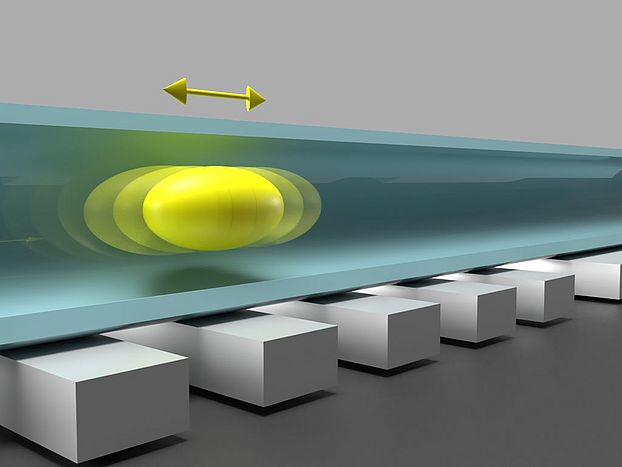On arXiv: A Qubit with Simultaneously Maximized Speed and Coherence

To overcome the threshold for fault-tolerant quantum computation, qubits have to be protected from their noisy environment to attain the necessary high fidelities. Recent experiments discovered sweet spots with strongly enhanced coherence. However, decoupling a qubit from its surroundings also limits the control over the qubit’s state, typically leading to either coherent but slow or fast but short-lived qubits. This trade-off appears to be a severe fundamental limitation hampering the performance of qubits.
In this work, we show how this can be circumvented by demonstrating a simultaneously fast and coherent tunable regime in a hole spin qubit. A Ge/Si core/shell nanowire, operated at 1.5 K, provides the strong confinement. The driving mechanism here is the strong and tunable direct Rashba spin-orbit interaction, achieving a maximal strength at finite electrical field due to gate-dependent heavy-hole light-hole mixing.
Breaking the speed-coherence trade-off makes it possible to boost fidelity and speed of one- and two-qubit gates. This concept can be expanded to planar arrays of hole or electron spin qubits as well. In this regime, the coupling to a microwave resonator is also predicted to be both strong and coherent. Altogether, this is opening a new path towards fault-tolerant quantum computation.
Collaboration between the Ares group (Oxford University) and Zumbühl group (University of Basel), supported by the the NCCR SPIN of the Swiss NSF, the Swiss Nanoscience Institute (SNI), the Georg H. Endress Foundation, the EU H2020 European Microkelvin Platform (EMP) project (Grant No. 824109) and the TOPSQUAD project (Grant No. 862046).
A Qubit with Simultaneously Maximized Speed and Coherence
Miguel J. Carballido, Simon Svab, Rafael S. Eggli, Taras Patlatiuk, Pierre Chevalier Kwon, Jonas Schuff, Rahel M. Kaiser, Leon C. Camenzind, Ang Li, Natalia Ares, Erik P.A.M Bakkers, Stefano Bosco, J. Carlos Egues, Daniel Loss, Dominik M. Zumbühl,
arXiv:2402.07313 (Feb 13, 2024), manuscript pdf
